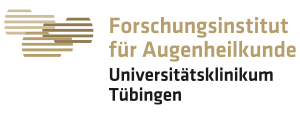Straßer Lab
Applied Vision Research
Home » Labs » Straßer Lab » Projects » TES Ciliary Muscle
Effects of Transcorneal Electrostimulation on the Ciliary Muscle Morphology and Accommodation
In transcorneal electrical stimulation (TES), the eye is stimulated with weak electrical currents via a DTL electrode placed in the lower eyelid. TES can be used to elicit subjective light phenomena, so-called phosphenes, whose minimum trigger thresholds allow the assessment of retinal functions. These thresholds were found to be significantly higher in patients with retinopathia pigmentosa. Moreover, TES is used for therapeutic purposes in inherited retinal degenerative diseases. Presumably due to an increased release of growth factors, TES was found to lead to a slowing of the progression of retinopathia pigmentosa. Additionally, electrostimulation performed with microelectrodes within a scleral contact lens has been successfully applied to improve accommodative ability in presbyopic subjects with respect to near visual acuity and reading speed.
Up to the present, the anatomical effects of electrical stimulation on the ciliary muscle have not yet been investigated. This project therefore aims at assessing whether transcorneal electrical stimulation leads to morphological and/or functional changes of the ciliary muscle. In a previous study, we showed that the ciliary muscle of emmetropic as well as myopic young adults undergoes a significant thinning after 30 minutes of continuous reading at a distance of 25 cm (Wagner et al., 2019b). It is unclear whether this anatomical change occurs due to an increased sympathetic innervation, due to changes in blood flow or interstitial fluid distribution, or, for example, due to muscle fatigue. It is conceivable that TES likewise induces changes in ciliary muscle morphology, which could be a consequence of changes within the tissue without involving the central control circuit of accommodation, as described above. To verify whether electrostimulation has a morphological effect on the ciliary muscle on the one hand and/or on accommodation on the other hand, optical coherence tomography (OCT) will be used to analyze ciliary muscle morphology before and after ipsi- as well as contralateral TES. If anatomical changes in the ciliary muscle are measurable in the OCT images with contralateral stimulation, this would indicate that TES affects the central control of accommodation. The results of this study are important for the use of TES as treatment of patients with degenerative retinal diseases and the further development of aids to restore accommodation in presbyopia.
Publications
- Sandra Wagner, Frank Schaeffel, Eberhart Zrenner, and Torsten Straßer. 2019. “Prolonged Nearwork Affects the Ciliary Muscle Morphology.” Experimental Eye Research 186 (September): 107741. doi:10.1016/j.exer.2019.107741.
- Sandra Wagner, Esra Süer, Bishesh Sigdel, Eberhart Zrenner, and Torsten Straßer. 2023. "Monocular transcorneal electrical stimulation induces ciliary muscle thickening in contralateral eye" Experimental Eye Research (ahead of print). doi: 10.1016/j.exer.2023.109475.

